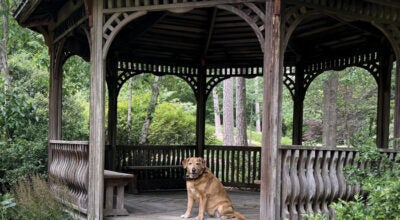Home and garden Q&A: Warmer weather brings in questions
Published 12:00 am Saturday, May 4, 2024
May has arrived with beautiful weather. It’s time to pull up the pansies and other bedding plants and plant summer annuals and perennials. Many are working outdoors and have discovered problems in their outdoor plantings and landscape. Below are a few questions posed that may be of interest.
Question: I have bearded irises blooming and have spread profusely over the past few years. They are spreading so fast and I need to move them to another location. When is the best time of year to relocate irises?
Answer: The best time to plant bearded iris is July through September. This will allow them to become well established before winter. In a well-prepared bed, dig a shallow hole large enough to accommodate the rhizome or clump of rhizomes. Form a mound of soil in the center for the planting base. Make the mound high enough so the top of the rhizome is slightly above soil level. Spread the roots around the mound; fill with soil, and water them thoroughly. Irises usually have a high success rate when transplanting. Go online to https://plants.ces.ncsu.edu/plants/iris/for more detailed information.
Question: The newly planted azaleas at St. John’s Lutheran Church on Church Street side of the building are in full bloom. The blooms are very colorful and beautiful. However, the leaves look terrible. They are not green but a pale-yellow color. What is the problem with these shrubs?
Answer: It’s a common problem caused by an insect — the azalea lace bug. It is a very small, clear-winged insect that was a problem last summer. The foliage is inundated with small, dotted, yellow splotches at first, and then turns completely yellow after a massive infestation. These minute insects are found on the underside of leaves along with tiny black splotches of excrement resembling dark varnish.
Repeated applications of insecticides labeled for azaleas or insecticidal soap effectively control lace bugs. Thorough coverage is essential when applying sprays for control. It is very important that the underside of the leaves are covered. Use high pressure on the undersides of the leaves for best control. Systemic insecticides that contain the active ingredient imidacloprid can also be applied as a soil drench which controls the pest systemically without constant foliar spraying. Go to https://content.ces.ncsu.edu/azalea-lace-bug for more detailed information for lace bug control.
Question: I was working outside in my yard, and I think I may have gotten infected with poison oak. Is poison oak leafing out now? How can I control it?
Answer: Yes, poison oak is beginning to leaf out now, and the leaves and the sap from the cut stems are very potent. Controlled sprays of Roundup (glyphosate) or a broad leaf brush killer will eliminate the noxious weed. Now is the best time to control this vine.
Darrell Blackwelder is the retired horticulture agent and director with the North Carolina Cooperative Extension Service in Rowan County. Contact him at deblackw@ncsu.edu.






